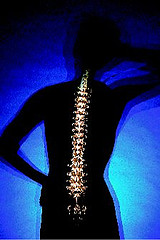 There have been several articles published in medical research journals which are pointing out just how flawed, biased, and just plain wrong biomedical research has become.
Such studies can cause serious harm. Paxil was used as a teen anti-depressant for years, largely based on a study which massaged the data to come to absolutely false conclusions about its safety and efficacy. Vioxx, the miracle painkiller that killed, was allowed on the market due to research designed to hide its deadly side effects. As far back as 2003, bias was noted in the biomedical reesarch literature, but little has been done to change things. At most, some journals ask investigators to self-report any conflicts of interest they may have. Of course, few do.
There have been several articles published in medical research journals which are pointing out just how flawed, biased, and just plain wrong biomedical research has become.
Such studies can cause serious harm. Paxil was used as a teen anti-depressant for years, largely based on a study which massaged the data to come to absolutely false conclusions about its safety and efficacy. Vioxx, the miracle painkiller that killed, was allowed on the market due to research designed to hide its deadly side effects. As far back as 2003, bias was noted in the biomedical reesarch literature, but little has been done to change things. At most, some journals ask investigators to self-report any conflicts of interest they may have. Of course, few do.
The fact of the matter is, that pharmaceutical companies control the vast majority of grant money going to research institutions, and as an investigator, your livelihood can be put on the line if your grant money dries up.
Not surprisingly, bias and hidden agendas come up in the research on alternative medicine and chiropractic in particular. Mostly this occurs in the form of journal articles using research that has been hand-crafted to make chiropractic spinal manipulation appear dangerous -- when, in fact, you have a higher risk of serious injury while driving to your chiropractor's office than you do of any treatment you receive while you're there.
A case in point is the article, "Adverse effects of spinal manipulation: a systematic review," authored by Edzard Ernst, and published in the Journal of the Royal Society of Medicine in 2007. Ernst concludes that, based on his review, "in the interest of patient safety we should reconsider our policy towards the routine use of spinal manipulation."
This conclusion throws up several red flags, beginning with the fact that it flies in the face of most of the already-published, extensive research which shows that chiropractic care is one of the safest interventions, and in fact, is safer than medical alternatives.
For example, an examination of injuries resulting from neck adjustments over a 10-year period found that they rarely, if ever, cause strokes, and lumbar adjustments by chiropractors have been deemed by one of the largest studies ever performed to be safer and more effective than medical treatment.
So the sudden appearance of this study claiming that chiropractic care should be stopped altogether seems a bit odd.
As it turns out, the data is odd as well.
In 2012, a researcher at Macquarie University in Australia, set out to replicate Ernst's study. What he found was shocking.
This subsequent study stated that "a review of the original case reports and case series papers described by Ernst found numerous errors or inconsistencies," including changing the sex and age of patients, misrepresenting patients' response to adverse events, and claiming that interventions were performed by chiropractors, when no chiropractor was even involved in the case.
"In 11 cases of the 21...that Ernst reported as [spinal manipulative therapy] administered by chiropractors, it is unlikely that the person was a qualified chiropractor," the review found.
What is interesting here is that Edzard Ernst is no rookie in academic publishing. In fact, he is a retired professor and founder of two medical journals. What are the odds that a man with this level of experience could overlook so many errors in his own data?
The likelihood of Ernst accidentally allowing so many errors into his article is extremely small. It is far more likely that Ernst selected, prepared, and presented the data to make it fit a predetermined conclusion.
So, Ernst's article is either extremely poor science, or witheringly inept fraud. I'll let the reader draw their own conclusion.
Interestingly enough, being called out on his antics has not stopped Ernst from disseminating equally ridiculous research in an unprofessional manner. Just a few days ago, Ernst frantically called attention to another alleged chiropractic mishap, this one resulting in a massive brain injury.
Not only has he not learned his lesson yet, Ernst tried the same old sleight of hand again. The brain injury, as it turns out, didn't happen until a week after the "chiropractic" adjustment, making it highly unlikely, if not impossible, for the adjustment to have caused the injury in the first place. Secondly, the adjustment wasn't even performed by a chiropractor. As the original paper points out, "cervical manipulation is still widely practiced in massage parlors and barbers in the Middle East." The original article makes no claim that the neck adjustment (which couldn't have caused the problem in the first place) was actually performed by a chiropractor.
It is truly a shame that fiction published by people like Ernst has had the effect of preventing many people from getting the care they need. I can only hope that someday the biomedical research community can shed its childish biases so that we all might be better served by their findings.









 The annual Fear Campaign is about to begin, as everybody with a pulse will have it hammered into their heads that if they don't get a flu shot, They Will DIE!
Remember the swine flu campaign of last year? It turned out,
The annual Fear Campaign is about to begin, as everybody with a pulse will have it hammered into their heads that if they don't get a flu shot, They Will DIE!
Remember the swine flu campaign of last year? It turned out, 


 It appears that the medical community is about to foist yet another quack "cure" for osteoporosis on the women of this country. Prolia, the latest alleged treatment for osteoporosis, is an injectible that was approved by the FDA primarily on the basis of a single study paid for and conducted by the company that developed the drug.
Ok, let me repeat that one more time. The FDA has approved a dangerous (we'll get to that in a minute) drug on the basis of research that the developer bought. Not to put too fine a point on it, but government oversight of BP's woebegotten Deepsea Horizon was more stringent than this.
It appears that the medical community is about to foist yet another quack "cure" for osteoporosis on the women of this country. Prolia, the latest alleged treatment for osteoporosis, is an injectible that was approved by the FDA primarily on the basis of a single study paid for and conducted by the company that developed the drug.
Ok, let me repeat that one more time. The FDA has approved a dangerous (we'll get to that in a minute) drug on the basis of research that the developer bought. Not to put too fine a point on it, but government oversight of BP's woebegotten Deepsea Horizon was more stringent than this. Those of you who have followed this blog for some time, or who receive my
Those of you who have followed this blog for some time, or who receive my  The March edition of the Alternative Healthpod is now available. If you are not a subscriber, you can listen to it
The March edition of the Alternative Healthpod is now available. If you are not a subscriber, you can listen to it